CPD ShotSpotter “Lives Saved” list includes at least one dead man, other misleading wins
Records show the Chicago Police Department has misrepresented the extent of the technology’s role in providing aid to gunshot victims.
by People’s Fabric May 20, 2024
Share this article:
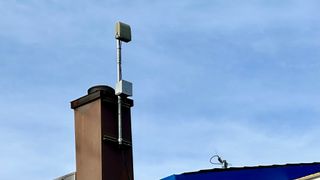
A list of cases that meet the Chicago Police Department’s (CPD) criteria for life-saving ShotSpotter events includes a number of deceptively framed incidents—everything from gunshot victims walking into police stations on their own to cases where police were already on scene.
As the gunshot detection technology nears its supposed November expiration date in Chicago, proponents have focused on two points in their last-ditch effort to keep the microphones listening: the system’s purported track record of saving lives, and a claim that residents rarely call 911 about gunfire.
People’s Fabric analyzed emergency dispatch audio, Office of Emergency Management Center (OEMC) event logs, ShotSpotter data, and incident reports for 115 events on the list.
In many instances, 911 calls in fact came in before ShotSpotter detections. In others, the technology did accurately detect gunfire, but responding officers were never aware of it. In two cases reviewed, no one was even shot—and in another, the shooting victim died, yet is still listed.
When ShotSpotter rebranded to SoundThinking last year, their sales pitch pivoted from debunked claims about preventing gun violence to an emotional appeal about its life-saving history, including a narrative that neighbors do not call for help. Of the 115 events reviewed, which covers a four-year span, only eight (7%) had no corresponding call.
“The real measure of ShotSpotter’s value is in the stories of lives saved,” wrote SoundThinking CEO Ralph Clark in January.
“ShotSpotter has led police to locate hundreds of gunshot wound victims where there was no corresponding call to 911 [emphasis Clark’s]. Those are victims who would not have received aid but for ShotSpotter.”
Chicago Police Superintendent Larry Snelling expressed a similar sentiment in a January Community Commission for Public Safety and Accountability (CCPSA) hearing on the West Side, telling the crowd, “We have over 150 incidents where officers arrived on the scene of a shot detection alert and applied life saving techniques and saved lives.”
A 2022 report from CPD to City Council explains their criteria: “Totals are provided for incidents resulting in a Life-Saving Award associated with a ShotSpotter alert. Awards with a status of FINAL or PENDING APPROVAL are counted.”
This means that any incident in which police determine life-saving aid was rendered, and ShotSpotter happened to have detected gunfire, then ShotSpotter is credited with saving that person’s life—even if ShotSpotter was never a factor in sending police to the scene.
Each of the stories below are among CPD’s “150 lives saved by ShotSpotter.”
A dead man on the “lives saved” list
At 11:36 PM on July 9, 2023, ShotSpotter detected gunfire on the 9200 block of South Brandon Avenue. Approximately a minute and a half later, a call of shots fired was received for the same block. More than 18 minutes after the ShotSpotter alert, police arrived at the scene and found Denard L. Morris, 45, of East Chicago, IN in the alley.
According to the police report, they found Morris “covered in blood, on his knees with his hands tied behind his back with white duct tape.”
When asked what happened, Morris said, “Bitch ass Gary Indiana police took me and dumped me.”
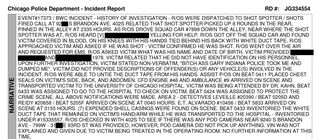
Morris died shortly after arriving at the hospital.
It’s unclear how many other victims on this list may have been fatally wounded since victim names are redacted. In this case, People’s Fabric was able to identify Morris because officers said his name over the radio the night he was killed.
A missed ShotSpotter alert
In the middle of the day on October 23, 2020, several 911 calls were received about a person shot outside the Jewel at 95th and Stony Island. Within one minute of the calls, an officer and ambulance were dispatched to the Jewel. Two minutes after the calls, OEMC asked the Strategic Decision Support Center (SDSC) if they had any ShotSpotter detections in the area. SDSC said no.
Nearly three minutes after the emergency calls were received, SDSC reported ShotSpotter had detected one noise from that location, but it had been classified as “other.” Officers arrived at the scene just a few seconds later.
In this instance, if not for the calls alerting police to the gunshot, SDSC would not have dug deeper in ShotSpotter’s data to find the misclassified gunshot. No aid would have been sent. To this day, this ShotSpotter alert does not appear on the City of Chicago ShotSpotter data portal, yet the system is credited with saving this life.
Gunshot victims who walked into police stations
In three cases, while officers were responding to ShotSpotter alerts, the victims found their own way to police districts to receive help.

On February 22, 2020, two men approached a couple in a parked car. A verbal altercation ensued. When the two men displayed firearms, the couple fled in their car. The two men then gave chase in their own vehicle, firing shots at the man and woman.
One bullet struck the man in the throat. ShotSpotter detected the gunfire—and 10 residents dialed 911 to report shots fired.
The woman continued to drive to the 25th District station, nearly a mile and a half from where police headed in response to the gunfire, and told police her boyfriend in the car was wounded. Officers at the station provided aid, and the couple was transported to the hospital by ambulance.
On May 9, 2020, ShotSpotter alerted police to a shooting on the 7900 block of South Halsted. As officers responded to the alert, at least one 911 caller reported shots fired at the same location. Minutes later, a man with a gunshot wound to the abdomen walked up to the 6th District station. Officers at the station applied aid and he was taken by ambulance to the hospital. The incident report states, “Later R/O’s [responding officers] would learn this was connected to a SST [ShotSpotter] alert.”

On January 19, 2022, this happened again when a man arrived at the 15th District station with several gunshot wounds. Officers later determined he had been shot over a half mile away, where ShotSpotter had previously detected gunfire.
No one shot but an aggressive dog
In two cases on the list, no one was even shot.
On November 28, 2023, 3rd District officers responded to a ShotSpotter alert reporting gunfire around the corner from the Parkway Gardens housing complex, also known as O-Block. When police arrived, a security guard said someone had fired shots at some loose dogs.
The officers found two dogs. One was bleeding, suffering from a gunshot wound. With the help of neighbors, they found the owner and returned the dogs to her apartment.
Moments later, officers heard screams coming from the unit. They re-entered the apartment to find the wounded dog mauling the owner’s leg. Unable to get the dog to stop, one of the officers fired two shots, killing the dog.
The woman was transported by ambulance to a hospital in stable condition with bite marks on one of her legs.
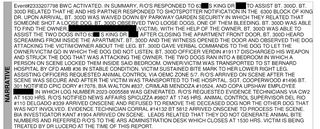
On November 17, 2021, multiple ShotSpotter alerts and calls were received about gunfire in the 2nd district—but there’s no record of anyone being shot. The police report, which was closed noting “unlawful use of a weapon,” does not mention that anyone was shot. Dispatch audio also does not indicate anyone was shot, and neither does the city data portal.
Police already on the scene
On the same block where police killed the wounded dog, four people were wounded in a shooting on May 3, 2023. A 16-year-old boy was taken to the hospital in critical condition. Three other victims went to the hospital in good condition.
An officer already on the scene put out a “10-1” call over police radio indicating an officer needs emergency help. While ShotSpotter detected the gunshots, no ShotSpotter call ever went out over police radio. There was no need, officers were already there, with more on the way.
A similar scenario unfolded two years earlier on the 3300 block of West Polk. Officers pulled over a suspect. He shot and wounded two officers. Officers called in a “10-1” and were able to give their location for help. ShotSpotter detected the shots, but had no part in dispatching aid.
On June 5, 2020, officers witnessed a shooting, engaged in a foot chase, and called in shots fired. Help was already on the way when a minute and a half later, a ShotSpotter alert was relayed to OEMC.
On August 12, 2020, officers on foot heard the sound of broken glass. As officers ran to a nearby storefront to investigate, they heard gunshots from the same direction. They radioed in a call of shots fired. More than a minute later, SDSC confirmed ShotSpotter picked up the same shots. Officers already running to the scene found and rendered aid to an Uber driver with a gunshot wound.
Several other events included officers who reported seeing or hearing shots well before ShotSpotter alerts were relayed over the radio.
Other findings
There were instances in which no 911 call was received, or calls came in after police were already on the scene. There were 22 events on this list in which victims received emergency aid from officers when there was no call or a call came in more than two minutes after the ShotSpotter alert.
Once ShotSpotter sensors detect a noise, it can take several minutes for SoundThinking personnel to review audio, determine if legitimate gunfire has been detected, then report to SDSC, which then relays to OEMC.
Callers reported gunfire or shooting victims before or at the exact same time that the ShotSpotter alert was received by OEMC in 47 (41%) of these cases. In 17 instances, the ShotSpotter alert came more than a minute later than emergency calls to OEMC.
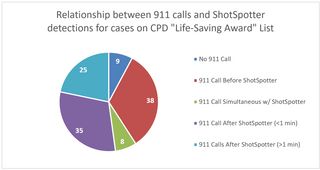
Of the 60 events in which ShotSpotter alerts were received before emergency calls, 35 (58%) of the calls came within one minute of the ShotSpotter detection. In many cases, the calls came in while police were en route or before they were dispatched. Calls for a person shot generally provided more precise location information to first responders than ShotSpotter alone, as victims often moved from a shooting scene to seek safety or help.
Claims that “80% to 90% of gunfire goes unreported” were also previously debunked after analyzing CPD data. When people are wounded, records show someone called emergency services 98.2% of the time.
CPD did not respond to a request for comment.
ShotSpotter has faced criticism for the over-policing of Black and Latino neighborhoods where the technology is primarily deployed. In February this year, police fired shots at a child after ShotSpotter misidentified fireworks as gunshots.
The MacArthur Justice Center has also filed a class action lawsuit alleging ShotSpotter has been used to justify illegal searches and false charges. Cook County State’s Attorney Kim Foxx has said ShotSpotter has little impact on prosecuting gun violence cases, while a recent academic study shows ShotSpotter has no measurable effect on increasing arrests or decreasing gun violence.
On Wednesday, May 22nd, City Council is expected to consider a largely symbolic order demanding that the mayor retain ShotSpotter on a ward-by-ward basis. The order was initially drafted for alderpeople by ShotSpotter’s lobbyists, as reported by the Reader.
About this story
Topics:
Related Stories
-
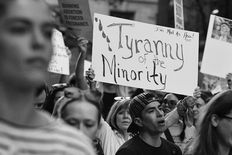
Welcome to the reconfiguration
Welcome to Unraveled.
-
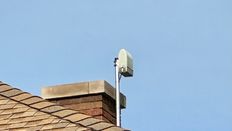
CPD sends error-ridden ShotSpotter report to City Council
The data includes over 12,000 events where police response times were zero or negative.
-
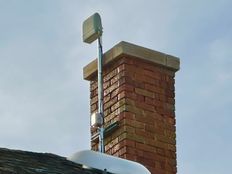
Study: ShotSpotter has “no effect” on Chicago’s fatal shootings or arrest rates
A new study has found that ShotSpotter, a gunfire detection technology (GDT), does not live up to the benefits touted by the vendor and law enforcement. Among the study’s findings, ShotSpotter “did not translate to any meaningful improvements to crime control outcomes.” Initially marketed as a crime reduction system, ShotSpotter, now rebranded as SoundThinking, has […]